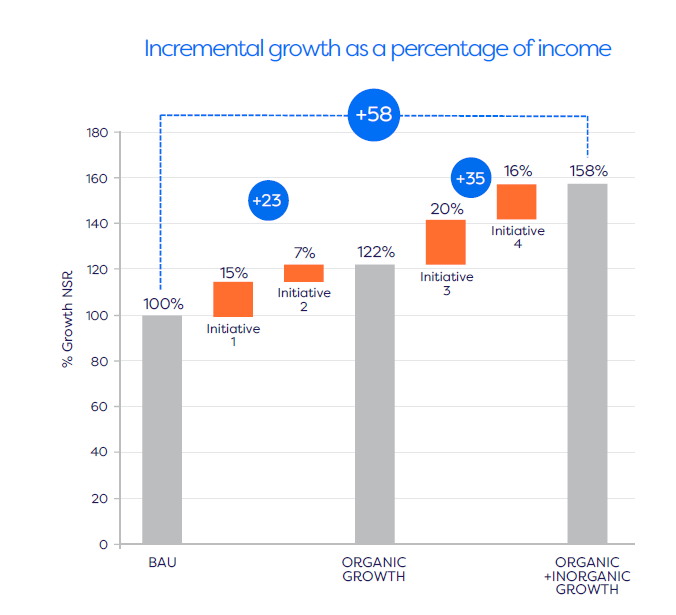Development of a five-year growth strategy
An FMCG company set a very challenging 5-year growth ambition and invited us to co-design a strategy to meet that challenge. The client’s team had identified that the planning approach they had used in previous years led to plans quickly becoming obsolete and implementation to fail. Because of this, we worked with a decision-based methodology so as to be able to evaluate and define the priorities to focus on and analyze the main uncertainty variables to develop contingency plans. As a result, we obtained a clear and aligned map to guide the organization towards the defined strategic priorities.
Context
Designing annual plans tied to budget cycles is, for many companies, an obstacle instead of an enabler for the achievement of objectives. The length and rigidity of these cycles in a context of high uncertainty makes them quickly become obsolete.
Our client’s commercial team identified this problem and asked us to think together about how to ensure that their ambition for growth did not remain just an expression of desire.
In the past, on many occasions they had found themselves facing very ambitious challenges, for which they had developed plans they could not execute, discouraging the team on the one hand and, on the other hand, making it clear that this time the approach had to be different.


Approach
Together with the client’s teams, we used a decision-based planning methodology that allowed us to analyze the different strategic opportunities and agree to focus on seven different revenue streams that, due to the market context and the company’s competitive position, would have the greatest impact on results.
For each revenue stream, we defined a work team whose first goal was to identify its main challenges and uncertain variables, as well as to estimate and agree on their contribution to the plan. Once that was agreed upon, initiatives with goals in different time horizons were developed, to be able to monitor and evaluate results in short cycles and adjust plans in time.
Additionally, with our uncertainty analysis methodology, we identified the variables that could affect each initiative and ensured both that the diversity of initiatives would adequately balance the risks, and the development of specific contingency plans for the most critical risks.
Results
Thanks to this approach, it was possible to develop a strategy that generated 58% revenue growth. In addition, the way in which this strategy and its associated plans were designed gave the people involved the clarity and confidence to implement them. The decision-based planning methodology was very well adopted by all those involved, which made it possible to establish an approach and common language for future cycles.
